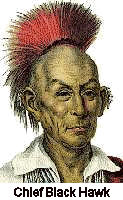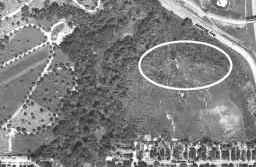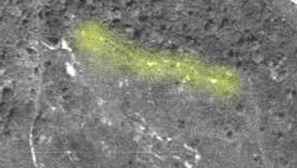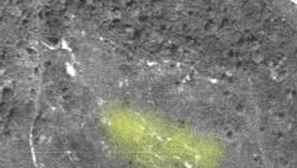GRANGER HILL
A Canadian squatter known as Granger1 is mentioned in Cleveland history books as the first known white man to settle on the west side of the Cuyahoga River. He is said to have been living on a grassy slope that later belonged to Riverside Cemetery.
He was there when James Fish arrived in 1812, and in 1815 Granger sold his land to the Brainards and moved to the Maumee country.
 This same hill is "famous" for being the burial site of chieftain Black Hawk's mother which he visited in 1833. Said one Cleveland history: "Taking a canoe he proceeded up the river to the bluff, where the Riverside Cemetery is now established, remaining there an hour or two." 2
This same hill is "famous" for being the burial site of chieftain Black Hawk's mother which he visited in 1833. Said one Cleveland history: "Taking a canoe he proceeded up the river to the bluff, where the Riverside Cemetery is now established, remaining there an hour or two." 2
Another author is more specific saying, "He took a canoe and proceeded alone up the river to the bluff that projects into the valley from the southeast corner of the Riverside Cemetery. Here he remained for an hour or more, in silent meditation, and then rejoined his comrades with a tear in his eye, though it is said that an Indian never weeps. From the fact of this visit to the grave of his mother, Black Hawk, it may be presumed, was born on the banks of the Cuyahoga."3
A third author says, "...Black Hawk, guarded, passed through Cleveland on his way west to be released. While here, in a small boat, attended by a single guard, he went up the Cuyahoga River to a high bluff, now the east end of Riverside Cemetery, where for some time he stood pensive at the grave where rest the remains of his mother."4
The impression one gets from reading documents like this is that the hill was a direct part of Riverside Cemetery, but I propose that the hill in question was actually the bluff that stood directly north of Redman Avenue and which was separated from the main cemetery site by a ravine. This land was part of the proposed expansion plans for Riverside. Originally owned by Titus Brainard and abutting land owned by Ebenezer Foster, it was probably a tantalizing piece of farmable land that Foster wanted to use. Later, Brainard sold it to the Riverside Cemetery Association.
In fact, an 1864 deed reads as follows:
"This indenture of lease made the first day of December in the year 1861 by and between Titus N. Brainard and Betsy Brainard of Brooklyn Township Cuyahoga County O. of the first part and Ebenezer Foster also of said Brooklyn of the second part witnesseth that the first party hath let and leased and hearby doth let and lease unto the second party nussuage (sic - usage?) or tenement situate in the county of Cuyahoga and state of Ohio and in the township of Brooklyn and is described as follows viz being situated on the top of what is called Granger Hill and is the same lot of land said Foster has occupied the past year and contains about eight or nine acres..."
Furthermore, I used to live on that portion of land between where the old dump was and Jennings Ave on the north and east, and Denison on the south. The street was fittingly called "Redman". The back of our house faced north and the back edge of the property was defined by a long chain link fence that stretched all the way from the dump to Jennings. The fence demarcated the line between Brainard's property and Foster's.
This whole area was called "the woods", though only parts of it were covered in trees. The bluff was well treed as was the western side. In the middle, there were some curious features aside from the grassy plains look. One part had what looked like, in the semi-dry season, to be a couple of ponds. In rainy weather, they merged into one big wrap around pond. Along the edge of the bluff, facing north, was a small hill. I can remember as a kid running up to the top (it was no more than 4 or 5 ft high) and then following the path that was on the topside of it. It was almost as though someone had built a rim around the whole north side. Never thought much about it, except to wonder why it was there. It was too narrow for a wagon, so why was it like that?
Granger Hill (as noted in deed)

|
Inset showing location of rim and ponds

|
Highlighted Rim

|
Highlighted Ponds

|
As I delved further and further into the history of our neighborhood, I found that Ebenezer Foster never owned that land, though he did lease it for awhile from Brainard. So one day, recently, I'm daydreaming and thinking about what that area must have looked like in days past and it suddenly occurred to me that this whole area was a bluff and what do bluffs do in nature? They erode. Rain falls, water runs, land erodes. So what in the heck was that rim doing over there?
An old Cuyahoga River history book5 mentions the Indians that lived in that area and how they would dig a trench along the inner side of a bluff and mound up the soil along the rim. They used these as lookouts so they could watch across the valley for any threats to their wellbeing.
I called the Natural History Museum and talked with one of their researchers. She was excited to hear that maybe there was a virtually untouched in the heart of the city Indian mound. Well, thanks to the Jennings Freeway, it is untouched no longer and in fact is gone completely.
She confirmed that what I described sounded just like what
the Indians were known to have done and explained that the ponds were very likely the result of the places where they'd put up a tent or hut and then dig a trench around it to keep the water out. This explained to me why one of the ponds was oblong and had a matching island in the middle. That had never made sense to me before.
The pictures of the woods on this site show portions of the ponds but nothing of the rim. The aerial view (taken in 1949) offers a more overall view but it is still not good enough to show the way the actual 'rim' looked.
In conclusion, this bluff appears to be the site known as Granger Hill (as identified by the deed), it also had features that suggest that it was well used by the Indians, and may have been the location where Black Hawk's mother was buried. [Note: Black Hawk was not born in this area. See footnote 6.]
Some last words about Mr. Granger. History has not recorded his name other than to tell us that he was from Canada, had a son named Samuel, and then moved on to the Maumee country after selling his land. Coincidentally, there was a Granger family originally from Connecticut who owned large tracts of land in the Western Reserve. I speak of Gideon Granger, Jr. and his sons Francis and John. All of Middleburg (later to be known as Middleburg and Berea) was originally his, as were some tracts in Rockport, northeast Ohio, and probably elsewhere. This family had migrated to Canandaigua, New York. One has to wonder if the unknown Mr. Granger was actually from Canandaigua and not Canada as history books have recorded?
Sandra Rozhon
©2005

